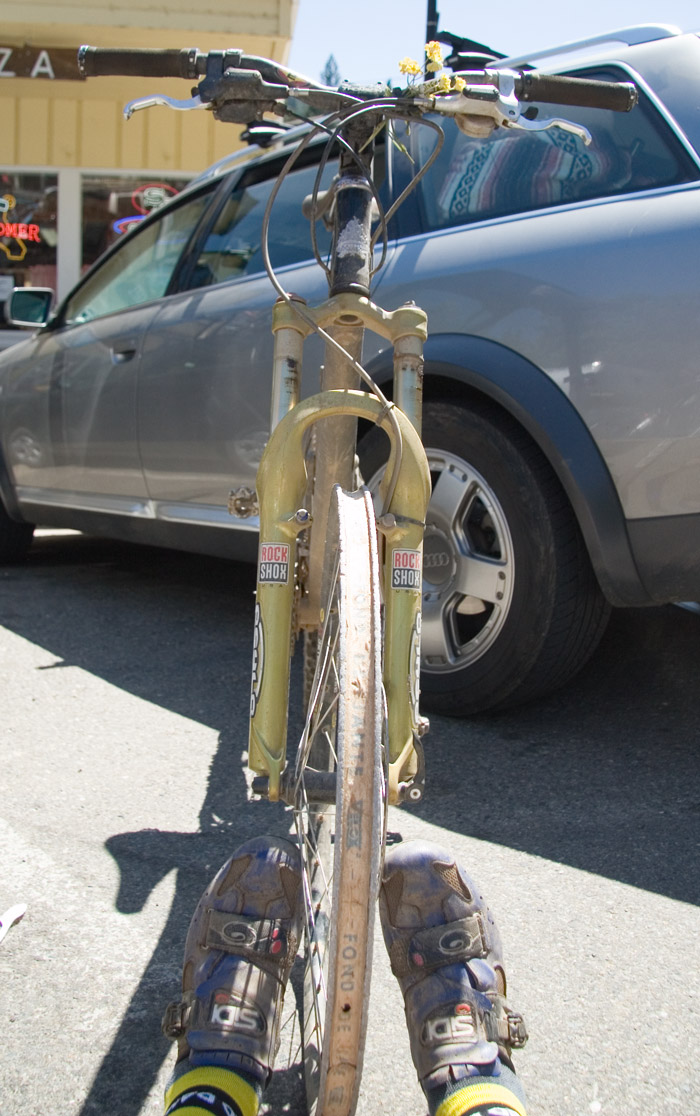Spoke Threadlocker
Several excelent options exist for threadlockers on spokes.
Contents
Why a threadlocker
While a very strong quality wheel can be built with nothing but a light oil on the threads of the spokes, the differences when using a threadlocker are noticed well into the lifetime of the wheel.
REASON #1 In time and with use, the oil that was initially on the spoke threads during the build will disipate and wash away. The resulting bare interface between stainless steel and aluminum or brass is able to corrode. This corrosion will work to lock the nipple in place, causing a rounded nipple face when an adjustment is attempted. Threadlocker prevents corrosion in the thread by filling the gaps. The result is a fastener that requires the same brakeaway torque in several years as was needed hours after the build.
REASON #2 In the event that a rim must be ridden without a tire (blown sidewall or irreparable flat), the rim is cycled and abused in a way completely out of line with how the system was designed to be used. In this case, the rim changes shape quite a bit compared to with a tire and air. If mearly tension is used to keep the nipples of the spokes in place, this cycling of the shape will periodically release this tension, allowing the nipple to rotate and the wheel to slowly start to fall apart. This reduces the ride time available in a situation like this. A treadlocker will help the nipple stay in place even when tension is released dramatically over thousands of cycles.
This was experienced by me first hand back in 1996 when I blew a sidewall 12 miles into the San Juan Mountains outside Durango, CO. I was forced to ride the rear rim over that 12 miles of singletrack to get to the closest road. This was back when I was still using oil on spoke threads. As I rode, I experienced the wheel slowly loosen up, wabble out, and eventually shatter. I got to the road just as the wheel had broken into two peices but was still rolling.
Recently, while racing the 2006 Downiville Downhill, I was forced to ride my front rim through the lower 1/3 of the course. The wheel was ridden as hard as possible since it was race conditions. The differnce with this wheel was that the nipples were mounted using Loctite 242. Amazingly, the wheel held up fine and was evenly perfectly true when checked after the finish line.

These are two cases that my not be considered when most people talk about the need for threadlocking spokes.
Threadlocker Etiquette
- Loctite threadlockers should never come in contact with plastics of any kind. The threadlocker will feed on the plastic and destroy it.
- Other than very special products, a threadlocker is designed to bond to clean, oil free surfaces. Oil will reduce or eliminate the strength of the bond.
- Activators may be used in certian cercumstances, but they reduce the strength of the threadlocker.
Pre-build Option
One of the best options available for threadlocking spokes is Loctite 242 or it's slightly stronger (especially with brass) relative Loctite 243. Both are commonly refered to as 'Blue Loctite'. I have personally used this for over 10 years. It is great.
If you have concerns about the threadlocking strength of 242, Loctite 222MS can be used instead. It is less powerful but less comonly available.
Post Build Option
If it is difficult or a wheel build must be done without 242 or 222MS at hand, Loctite 290 may be used after the build is done. This is not prefered, but acceptable in special cases.
Never an Option
Under no circumstances should Loctite 271 or any of the higher strength threadlockers ever be used on spokes. These are commonly refered to as 'Red Loctite'.
Other Considerations
- Grease or oil on the shoulder of the nipple or eyelet will make the build go much smoother, especially if using aluminum nipples.
- If building using a Mavic UST rim, the threaded eyelets should be fastened using Loctite 243 or equivilant as per UST PDS